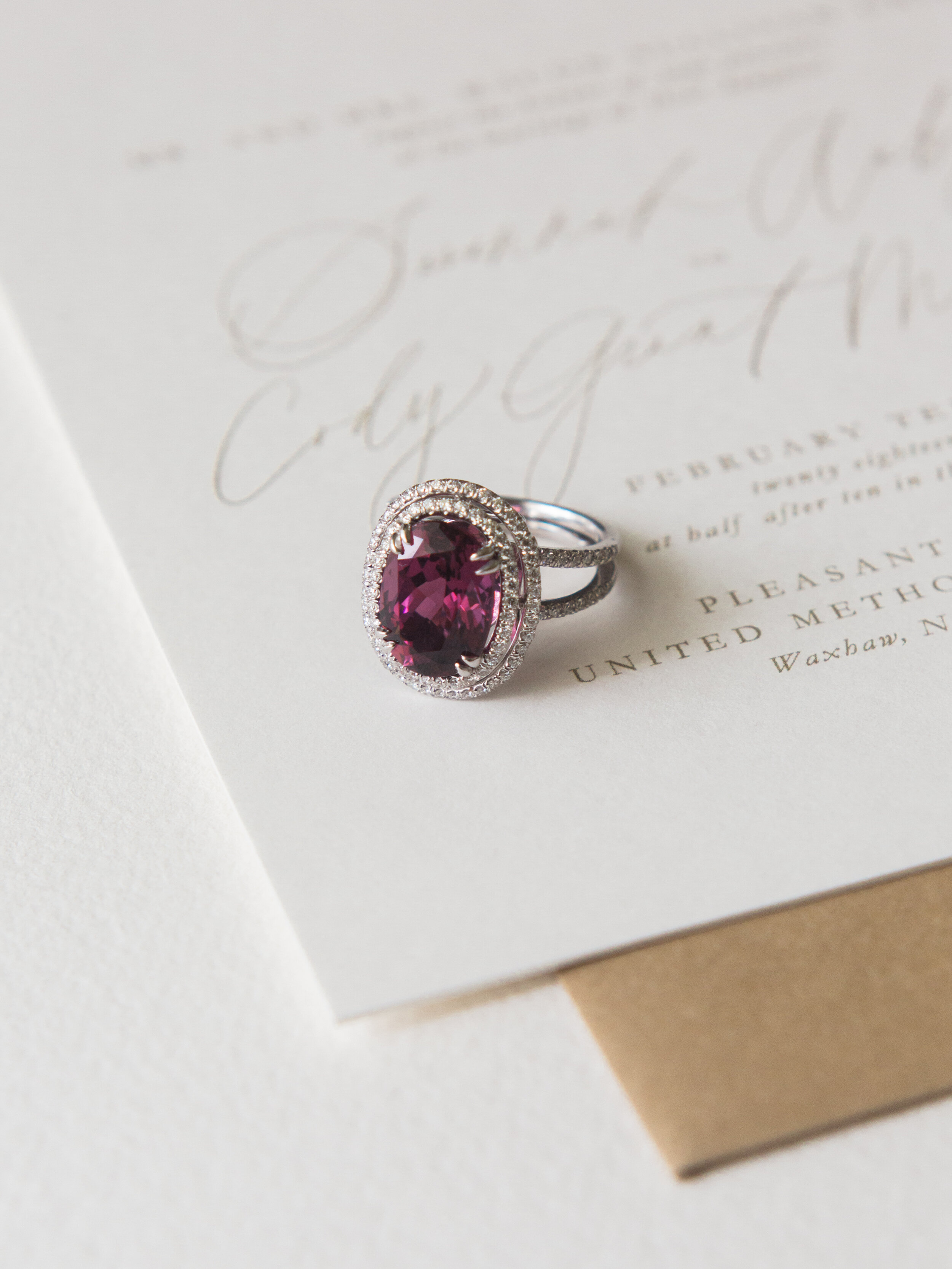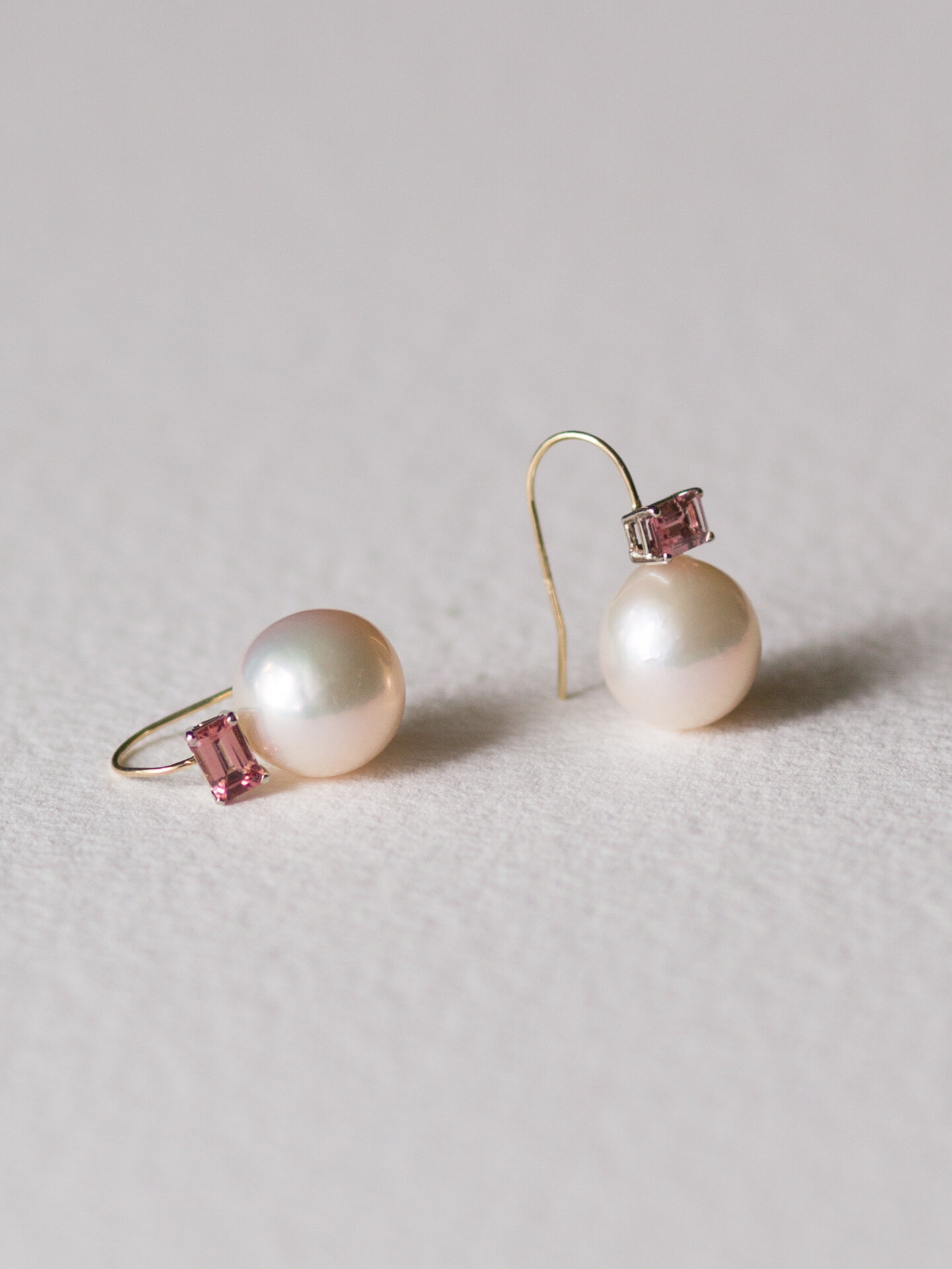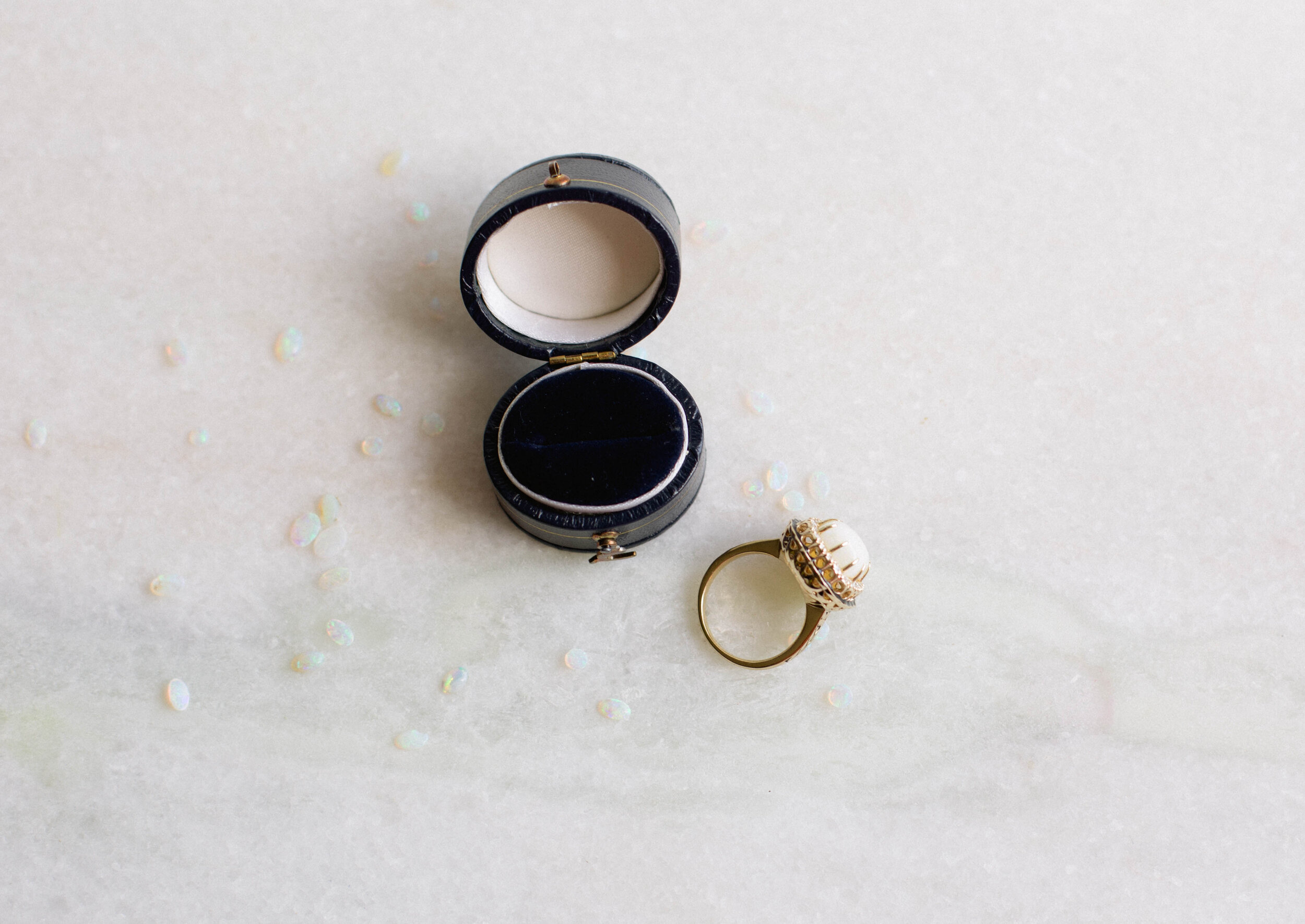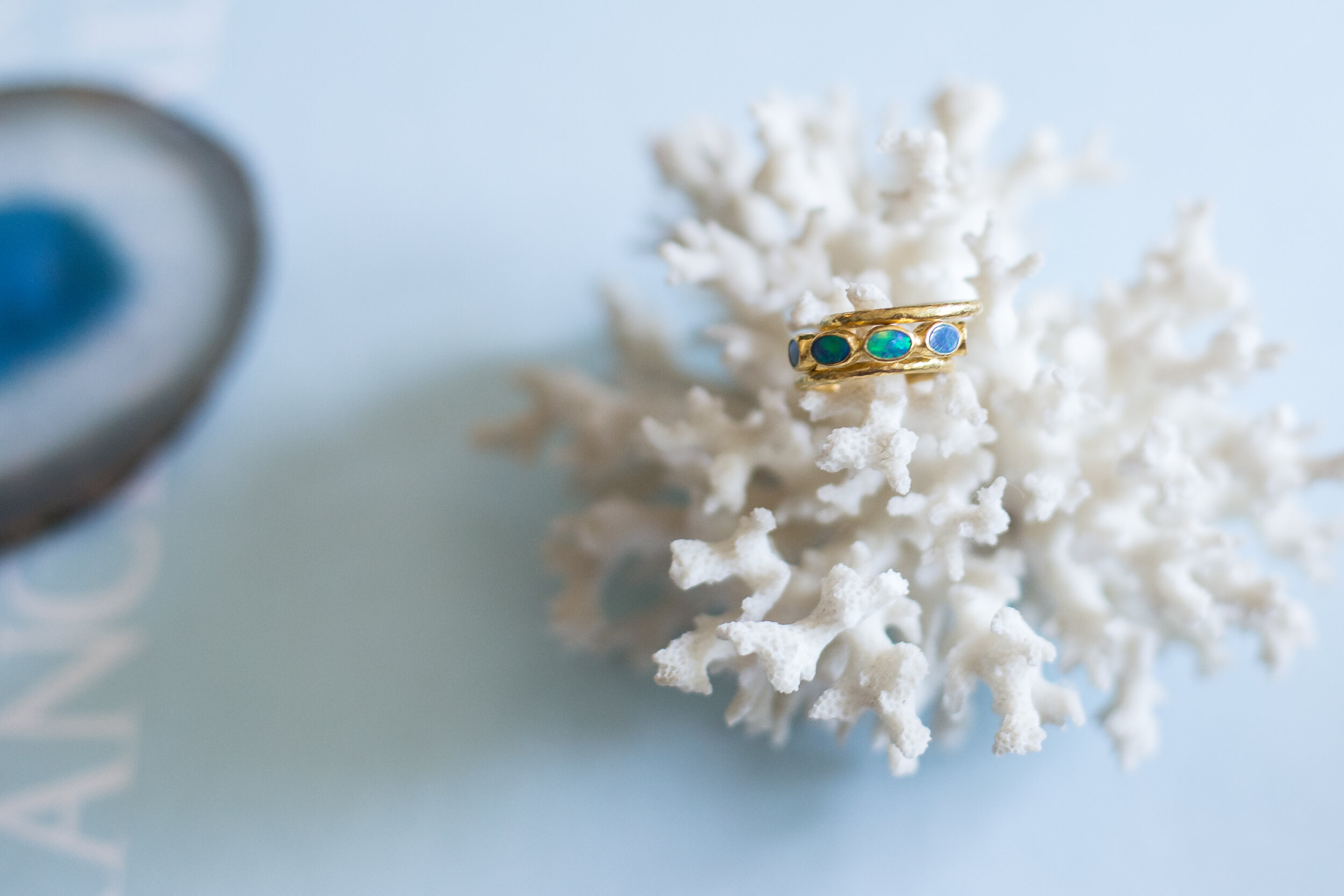October Birthstones
Emily Sole Jewelry
We are in one of the months of the year that possesses multiple birthstones! October’s birthstones are tourmaline and opal. Let’s take a minute to talk about the interesting qualities of these gemstones, along with some of my favorite jewelry I’ve created using tourmaline + opal.
Tourmaline
Tourmaline is one of the most popular gemstones because it occurs in every color of the spectrum. The intense saturation of the tourmaline makes the gemstone more valuable.
Many tourmaline color varieties have inspired their own trade names:
Rubellite is a name for pink, red, purplish red, orangy red, or brownish red tourmaline, although some in the trade argue that the term shouldn’t apply to pink tourmaline.
Indicolite is dark violetish blue, blue, or greenish blue tourmaline.
Paraíba is an intense violetish blue, greenish blue, or blue tourmaline from the state of Paraíba, Brazil.
Chrome tourmaline is intense green. In spite of its name, it’s colored mostly by vanadium, the same element that colors many Brazilian and African emeralds.
Parti-colored tourmaline displays more than one color. One of the most common combinations is green and pink, but many others are possible.
Watermelon tourmaline is pink in the center and green around the outside. Crystals of this material are typically cut in slices to display this special arrangement.
The following are photos of tourmaline pieces I have made.
Opal
Opal is the product of seasonal rains that drenched dry ground in regions such as Australia’s semi-desert “outback.” The showers soaked deep into ancient underground rock, carrying dissolved silica (a compound of silicon and oxygen) downward.
During dry periods, much of the water evaporated, leaving solid deposits of silica in the cracks and between the layers of underground sedimentary rock. The silica deposits formed opal.
Within the opal family, there are many different varieties of opal. Each has their own unique color combinations and character traits. Although experts divide gem opals into many different categories, five of the main types are:
White or light opal: Translucent to semitranslucent, with play-of-color against a white or light gray background color, called bodycolor.
Black opal: Translucent to opaque, with play-of-color against a black or other dark background.
Fire opal: Transparent to translucent, with brown, yellow, orange, or red bodycolor. This material—which often doesn’t show play-of-color—is also known as “Mexican opal.”
Boulder opal: Translucent to opaque, with play-of-color against a light to dark background. Fragments of the surrounding rock, called matrix, become part of the finished gem.
Crystal or water opal: Transparent to semitransparent, with a clear background. This type shows exceptional play-of-color.
The following are photos of opal pieces I have made.
All info from Gemological Institute of America
Thank you for reading through this week’s post! If you’d like any birthstone jewelry of your own, feel to reach out using the contact tab below!









